Movie Review – Indiana Jones & The Temple Of Doom
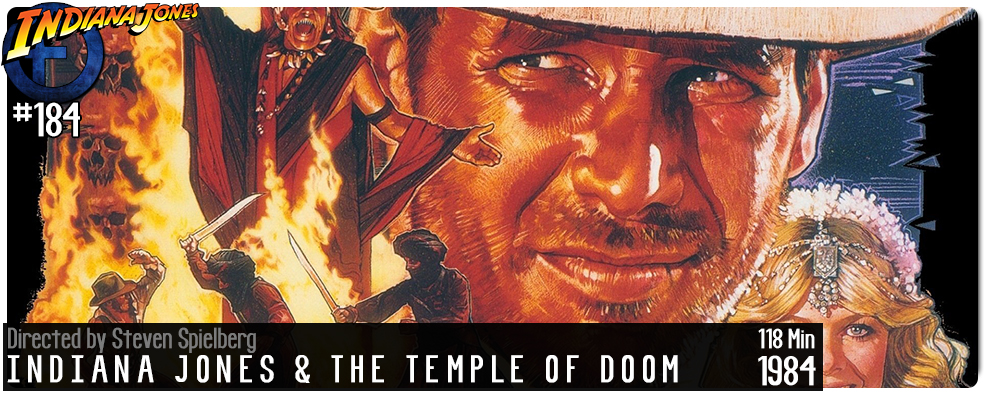
Cast : Harrison Ford, Kate Capshaw, Ke Huy Quan, Amrish Puri, Roshan Seth, Philip Stone, Raj Singh, Roy Chiao, David Yip. Chau Kah Joo, Ric Young, Pat Roach, Dan Aykroyd.
Synopsis: Indiana Jones returns to save a group of children from the clutches of an evil cult, and to recover some lost magical stones to bring a local village good luck.
**********************
Much awaited sequel (which is actually a prequel!) to the classic Raiders Of The Lost Ark, sees adventurer Indiana Jones return trying to locate some precious stones belonging to a village in what appears to be India. Filled with some of the most disgusting gross-out scenes in cinema history, Spielberg really trawled the bottom of the barrel for this insipid, somewhat flimsy, second film in the franchise. In what can only be described as an appalling lack of judgement, Spielberg cast the screechingly awful Kate Capshaw as Indy’s female interest, and as far from Karen Allen as it’s possible to get, she was dreadful.
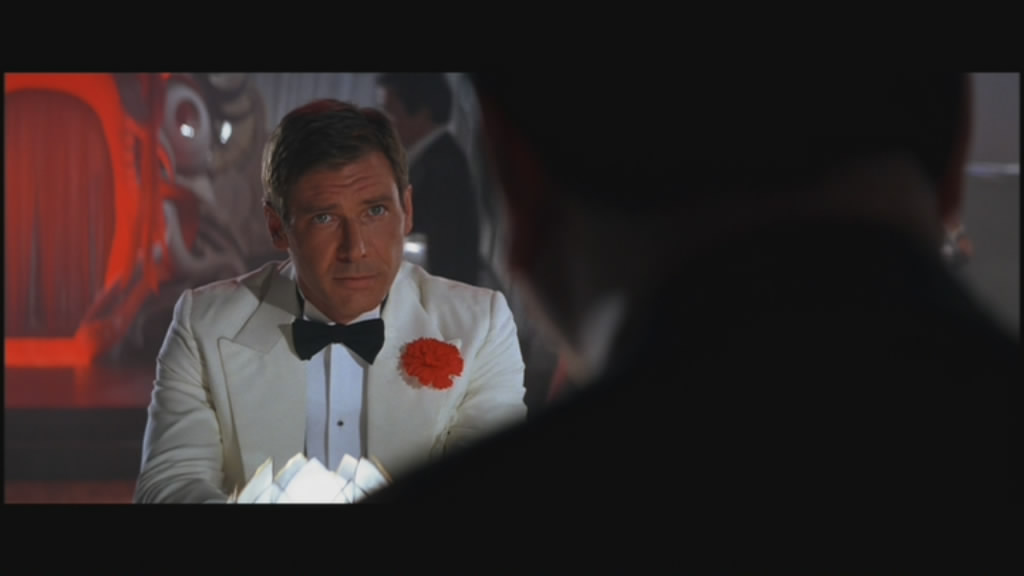
Don’t get me wrong, there’s moments of genuine brilliance in The Temple Of Doom: the thrilling mine-car chase for one, the brilliant opening musical number/shoot-out/poison antidote scenario for another, it’s just everything good about the film is washed away in a feeling of sublime desperation and…. well, depressing melancholy. This Indy adventure is, by popular convention, a somewhat slipshod effort from Spielberg, with the magic vanishing from the screen quicker than you can say “stunt casting”. Capshaw aside, and that’s a damn big aside, Jonathan Ke Quan is a really great addition to the mix, and his screen chemistry with star Harrison Ford is tangible. It’s just the films’ tone engenders so much nastiness, that no amount of genial ribbing and enjoyable witty banter is going to improve things.
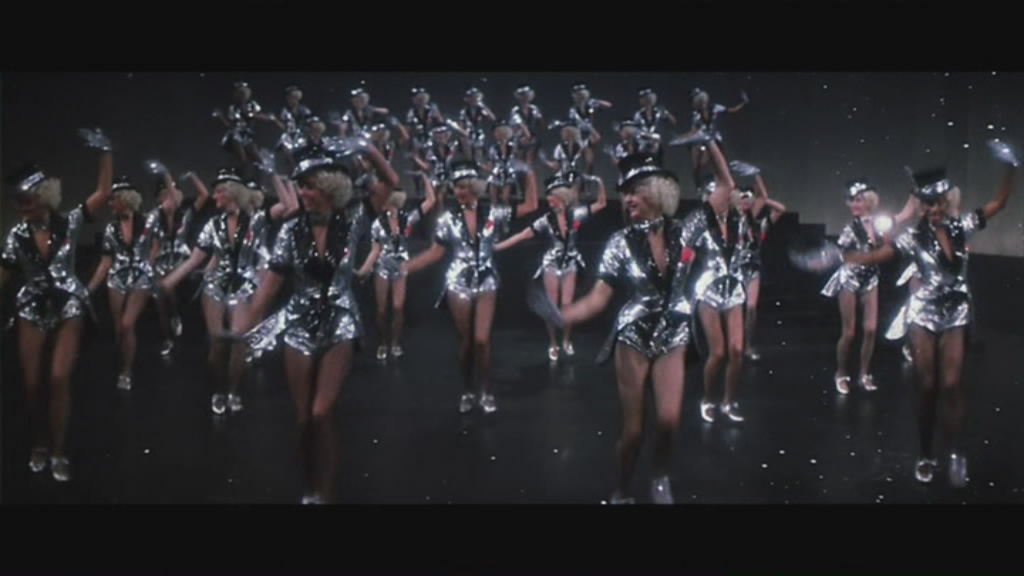
Temple Of Doom begins a year prior to events in Raiders, with Indiana Jones confronting a Shanghai crime lord in a nightclub, where he is poisoned in order to capitulate to some demands. Indy, trying to get to the antidote, inadvertently (or perhaps not) starts a brawl, and soon the room becomes a throng of screaming, running people. As Indy escapes through a window, antidote in tow, he is accompanied by resident stage performer Willie Scott (Capshaw), who then flees with Indy when she realises that her boss (the crime lord) wants to kill her too. Indy, Willie, and a young lad named Short Round (Ke Quan) escape Shanghai in a plane, although they are soon in trouble again as the plane is being flown by men working for that pesky crime lord. Escaping that, Indy lands himself in a village in India, where he meets a community in despair. You see, all the children have been kidnapped by the evil Thugee cult, in order to mine for the last two of a set of magical stones, which are thought to be buried underneath the nearby royal palace. Indy is tasked with the job of recovering both the stones (which have mystical powers) and the children (who don’t have any powers at all) in short order.
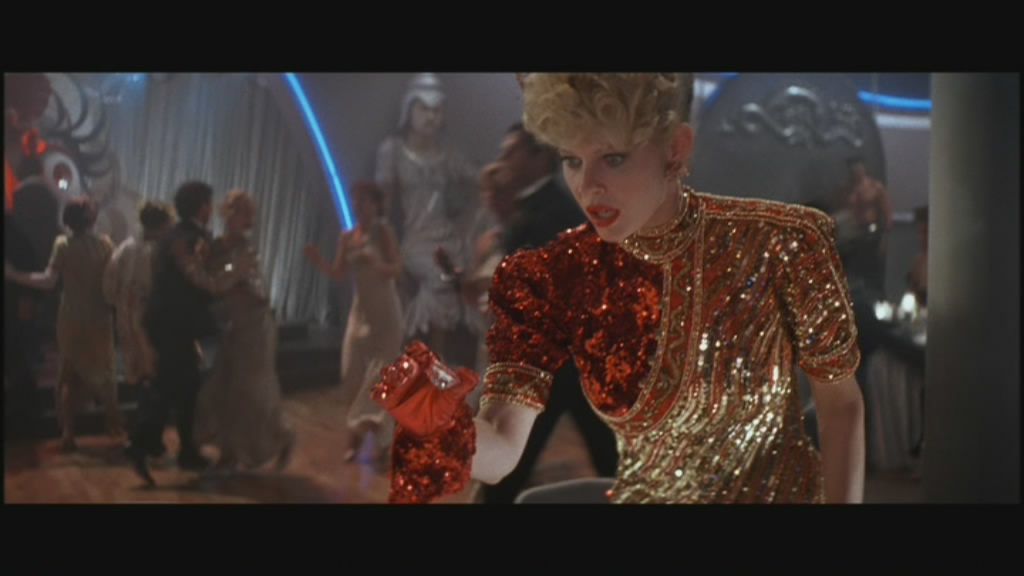
Temple Of Doom returns Indy to his pulp origins, with the sense of adventure we saw in Raiders a few years beforehand. He must battle against his better judgement, forces of evil, and almost impossible odds to win the day, and although it’s a dirty, screaming mess of a film, you know he’ll do just that. The problem with sequels is that, invariably, they must try and outdo the predecessor film by an order of magnitude, to counteract the Hollywood problem of diminishing returns in follow-up films. We are thus treated to, in one of TOD‘s most graphic scenes, a feast of inordinately disgusting food, such as fried monkey brains, snakes (and snake babies) and eyeballs in some kind of soup. Why Spielberg decided to try and outdo Raiders by including a Meal of Horrors is beyond me: it’s unnecessary and, honestly, not even funny. There’s bugs, bats, snakes, plenty of wild animals (again, perhaps trying to outdo the monkey from the previous film) and a menacing sense of doom which permeates the very soul of this film.
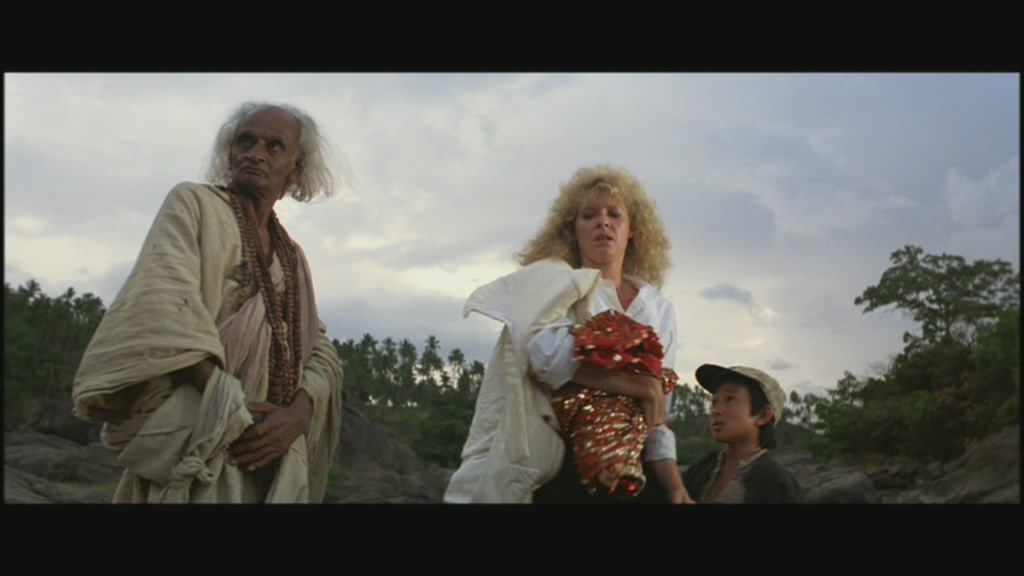
Temple Of Doom is not without it’s good moments, or even the great. Don’t be scared away by my portents of doom and gloom. The aforementioned mine-chase, utilising some stunning model work mixed with live action, is perhaps the defining sequence in the entire movie. It’s thrilling, adventurous, and absolutely what Indiana Jones is all about. The tense, hair raising rope-bridge spanning an enormous chasm sequence is also particularly good, although it’s impact is somewhat tempered by the resulting spoofs in various other films that we’ve been exposed to in the years since. Indy, sword in hand, faces down a gang of Thugee men, at either end of the bridge, by hacking the ropes holding the bridge up apart. the bridge, collapsing with Indy and the Thugee men on it, slams into the cliff face, sending various people tumbling into the crocodile infested river below. Gargantuan cinema, epic storytelling, yet, given it’s at the end of the film, far too late to save the movie from being still merely average.
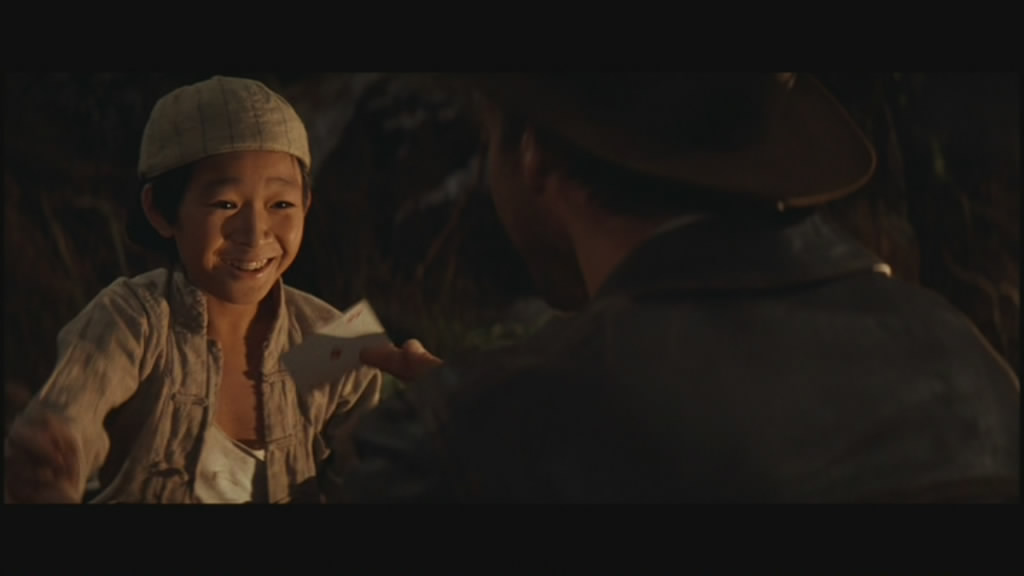
It’s not easy to see exactly where the film fall over thematically, although to a certain extent, I’d say it’s got a lot to do with the use of children that’s central to the plot. The kids, kidnapped by the Thugees, are beaten and whipped, which immediately engenders a kind of angry, boiling emotion within most people that consequently view the film in a negative light. The themes are particularly dark, unlike Raiders’ more light-hearted, tongue-in-cheek tone, and as a result, Temple Of Doom remains perhaps the least enjoyed, if somewhat unappreciated, of the Indiana Jones films.
Musically, John Williams’ score is by far the least enjoyable of all those he’s written. The Raiders theme is almost absent for the majority of the film, instead, the darker motifs Williams wrote only served to increase the unyielding melancholy feel of the movie overall. The opening musical number, Anything Goes, is a jolly, light-hearted moment that, in the end, doesn’t indicate where the film is heading, and it heads into some truly black moments. Williams musical themes during the Thugee ceremony, where a man’s heart is ripped from his body while he’s still conscious (somehow, supposedly, one of the many powers of the Cult, in that it can sustain life in a person beyond what is normally possible) are particularly deadening, which, I guess, maintains a fairly accurate thematic motif during what is, essentially, a horrific moment. It’s definitely not for kids, I have to say.
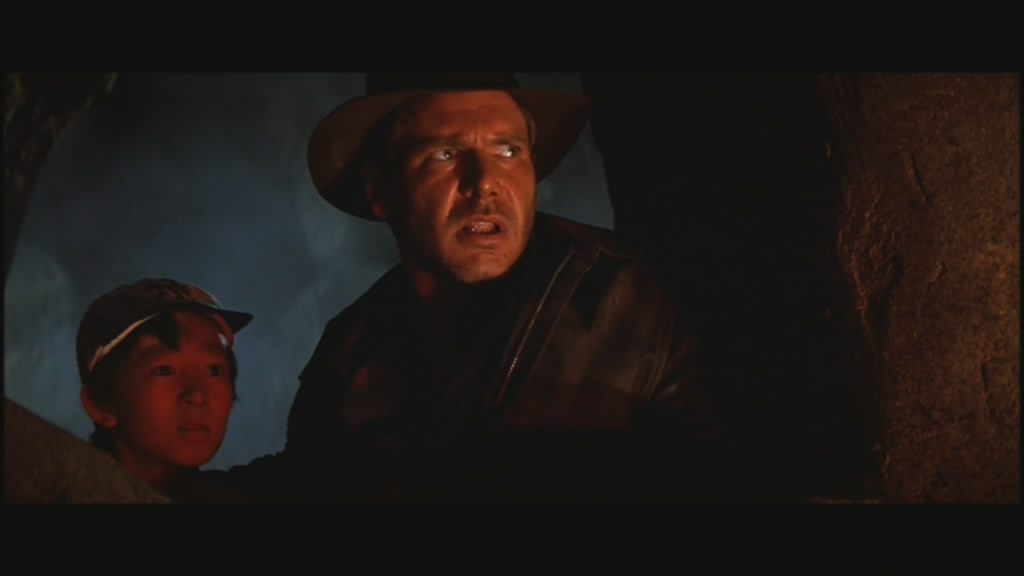
And that brings me to a major bone of contention for Temple Of Doom. Back in the day, Spielberg revolted against the MPAA decision to award this film an R certificate (which is equivalent to our Australian M15 rating. Essentially, it excludes a whole swag of younger kids who were able to see the original film. In order to obtain a PG rating, which would have allowed more younger kids to view the film, the MPAA asked Spielberg to make certain alterations to the film, which the directed baulked at. The MPAA, which at that stage probably didn’t want to annoy a director of Spielberg’s clout, decided to introduce a new rating, midway between PG and R, which became the PG13 rating. This allowed slightly more graphic, violent moments into a film still able to be viewed by a traditionally younger audience than before, albeit with parental supervision.
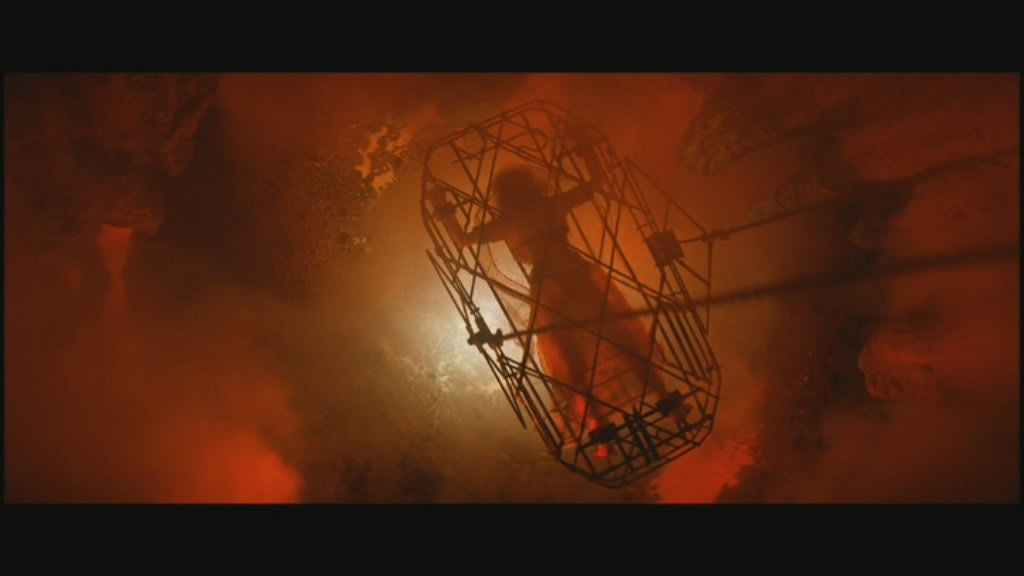
That said, I still feel that of all the Indy movies, Temple of Doom is not one I’d let my kids watch. How, you ask me, can you say that given the graphic face-disintegration that occurred at the end of Raiders? The disposal of various people during this film is about on par with those of Raiders, yet, the way it’s presented in Temple Of Doom is a lot darker, and less obviously a “fantasy”. Kids will be less able to distinguish between the “it’s movie magic” in Raiders and the “could it actually be real” moments in Temple. Therefore, I’d not let younger kids watch this until they’re a few years older.
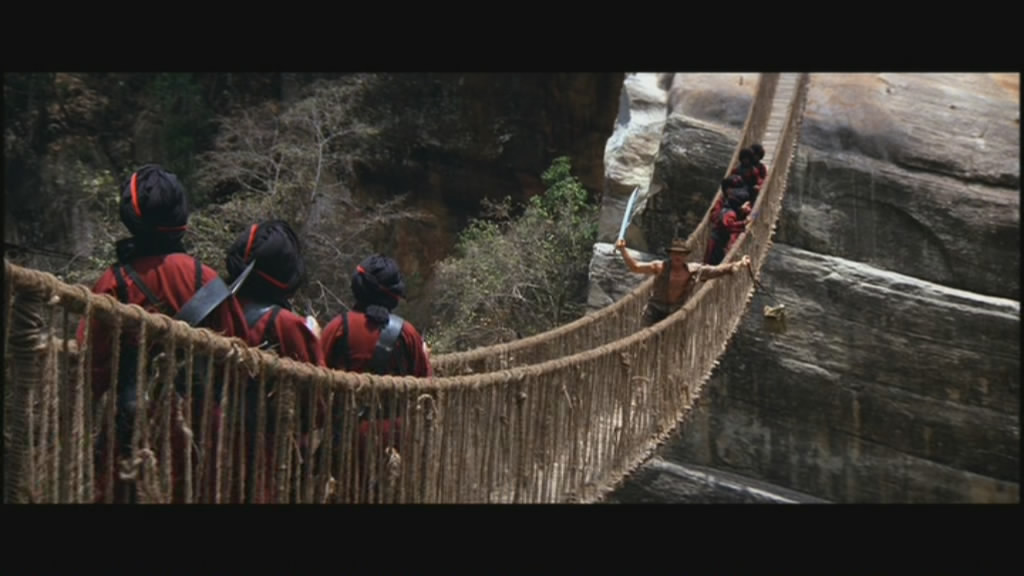
Spielberg himself has gone on record as saying that Temple of Doom is his least favourite of the Indy movies, and he only really likes the film because he met his future wife (Capshaw) while filming it. Heck, if even the director of the film doesn’t like it, then there’s no real reason for us to continue to justify how ordinary the film really is. Raiders scribe Lawrence Kasdan disassociated himself from the franchise as he felt Temple Of Doom was “too mean”, perhaps the most apt of any description laid against the film.
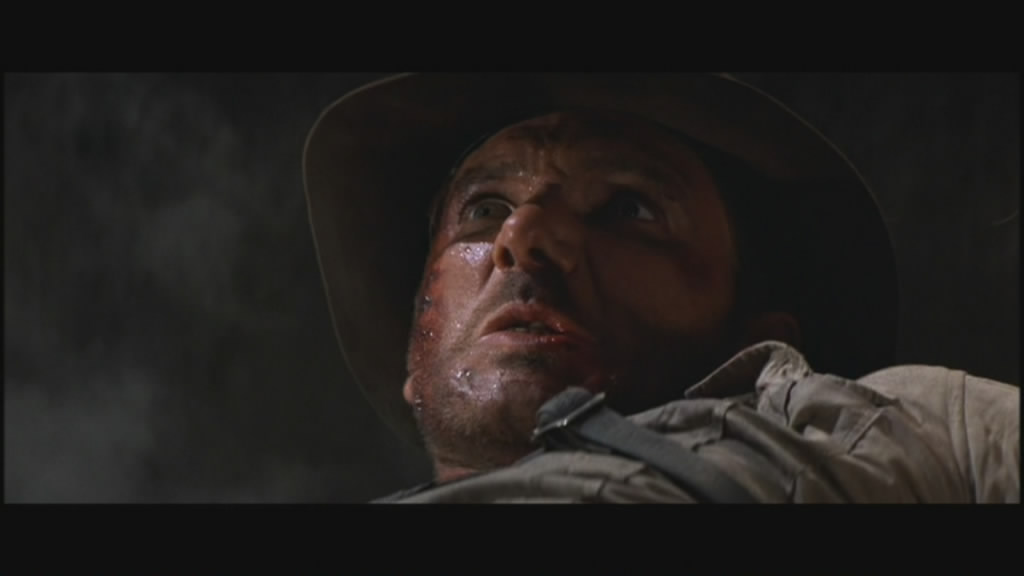
Temple Of Doom is a frustratingly dreary, albeit alternatively thrilling, Indiana Jones adventure, hamstrung from true classic status due to the overtones of child abuse, dark black magic and a pervading sense of dread throughout: watchable only for the climactic, thrilling final half hour and the lanky, laconic performance from Ford, which really is the only thing the film has going for it.
